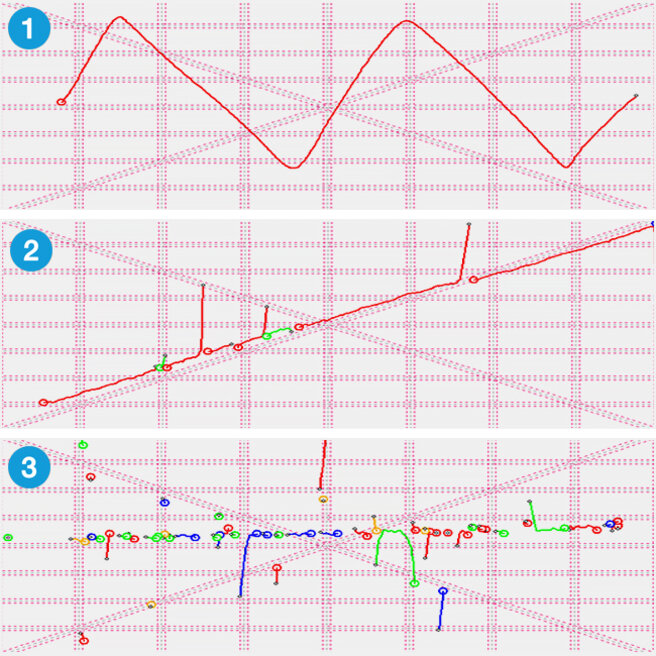HF surgery and PCAP
Robust technology defies interference signals
Electrosurgery has become the standard for many surgical procedures. Minimally invasive operations that leave no large external scars, targeted obliteration of unwanted tissue, separation of growths, clean incisions and reliable stopping of bleeding are the domain of this technique. Electric current is used, which provides local heating of the tissue and thus changes its structure. However, voltages and frequencies supplied by a special generator not only affect the tissue locally, but also emit electric fields and vagabond through the operating room environment.
PCAP technology, on the other hand, uses weak electric fields whose intensity is modulated by the operator's finger. The strong fields emitted by the RF generator are superimposed on these. To distinguish between the useful signal (finger) and the interference signal (RF generator), the touch controller must be carefully tuned. It is supported in this by hardware modifications for shielding on the sensor and controller circuit board.
An important role is played by what is known as fine tuning. In this process, the firmware of the touch controller is set so that it is optimally adapted to the ambient conditions, detects interfering signals and suppresses them effectively.
What are the advantages of PCAP touchscreens?
Touch technology in general enables the design of contemporary graphical user interfaces (GUI) where values can be modified where they are displayed on the screen. By separating function (touch screen) and design (cover glass), it allows new freedoms: The cover glass can be designed according to optical (e.g. anti-reflective coating, printing, surface), design (printing, cutouts for sockets, windows for brightness sensors) and medical (mechanical resistance, disinfection, anti-viral coating) criteria.
How can we support?
With the experience of many projects especially in demanding environments, we determine the right material for the cover glass, and manufacture it according to your requirements. We first carry out the tuning of the touch controller in the laboratory and measure the system. We then perform the release test in a real environment. The fine tuning has to be done only once as an example and is valid for the whole series.
In addition, we make recommendations for the optimized design of the GUI for the operating room environment.
Which devices benefit from this?
More and more medical devices are migrating from simple operation with switches, potentiometers and indicator lights to user-friendly interfaces with displays and touchscreens. The environment in which they are to be used is not free of electrical interference. Particularly in intensive care and the operating room, a wide variety of devices must work together to support the patient, and undesirable interactions must not occur.
Examples of this are
- Electrosurgical equipment
- ECG devices
- Defibrillators
- Blood pressure measuring devices
- Anesthesia equipment
- Patient monitors
- Operating and examination lights
- Infusion equipment
- Suction devices for surgery and drainage
- Electro-therapy devices
- Patient monitoring
- Devices for dental technology
Figure 1: The image shows a regularly functioning PCAP touchscreen. The drawn shape is recognized exactly and reproduced on the display.
Figure 2: A touchscreen that is not optimally adjusted reacts to the influence of an external field. The drawn diagonal has "outliers" at the points where the external field has overlapped the recognition of the touch position.
Figure 3: The interference is so strong that a solid line can no longer be recognized. Meaningful operation of the device is thus no longer possible.
Whitepaper: Using PCAP under difficult EMC conditions
Strong electric fields changing in amplitude and frequency require a special setting of the controller, since these fields strongly overlap with the useful signal and radiate into the capacitive electrodes. Using the example of HF surgery as an application area, the influence and possible mitigation measures are demonstrated. This makes applications of PCAP with its advantages possible even in areas where they were previously excluded by interference.
Consulting and contact
Your wishlist is empty


